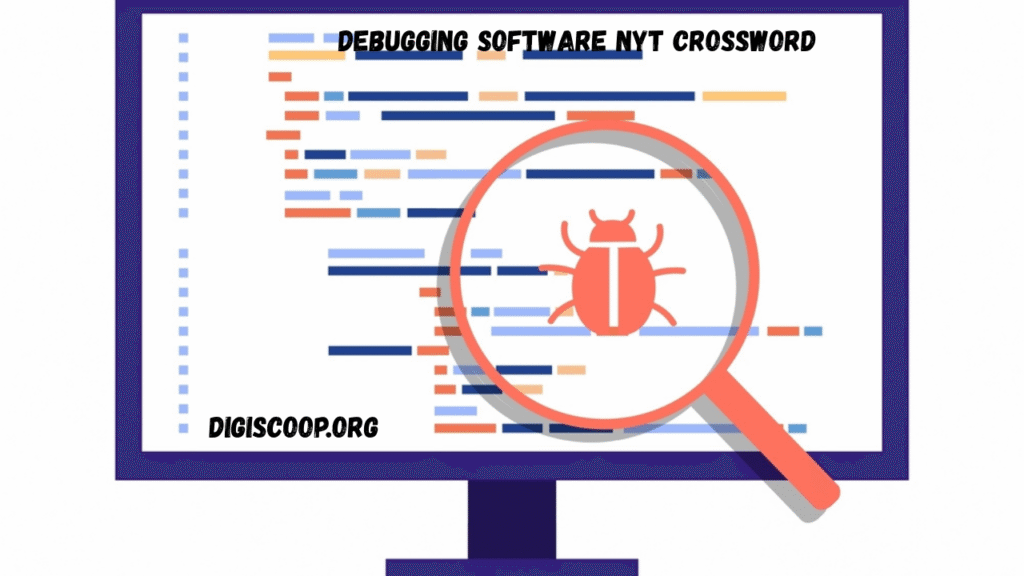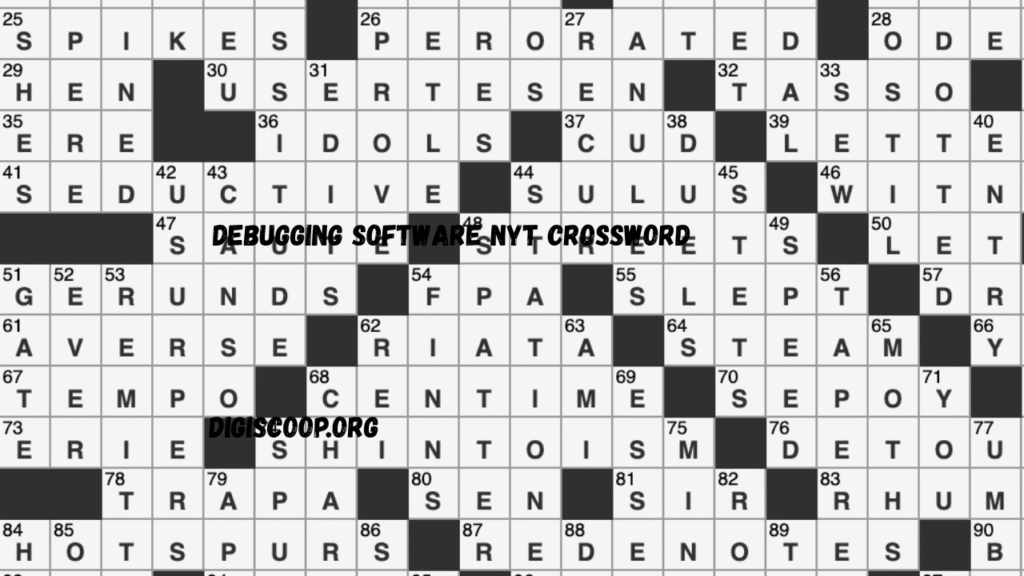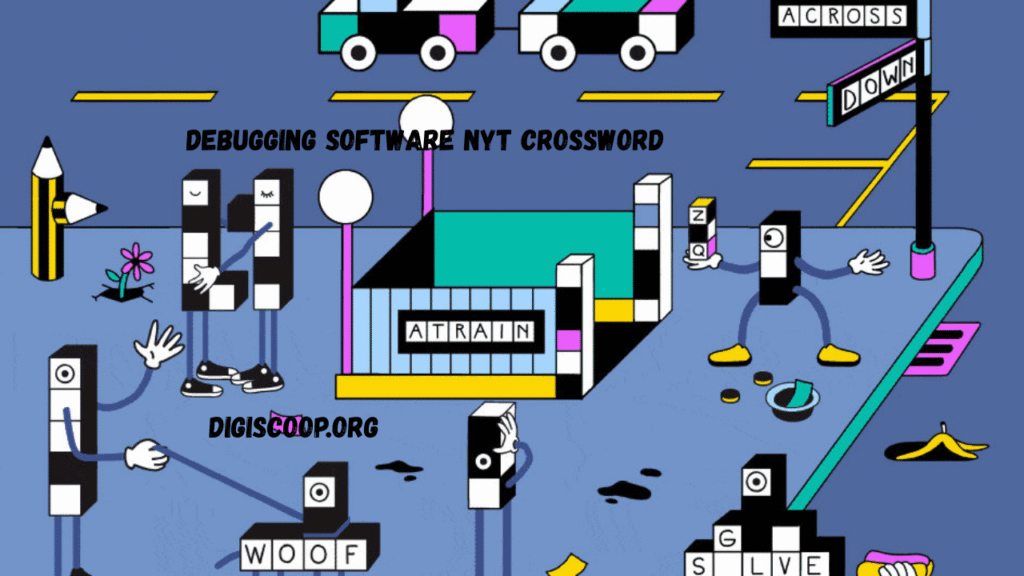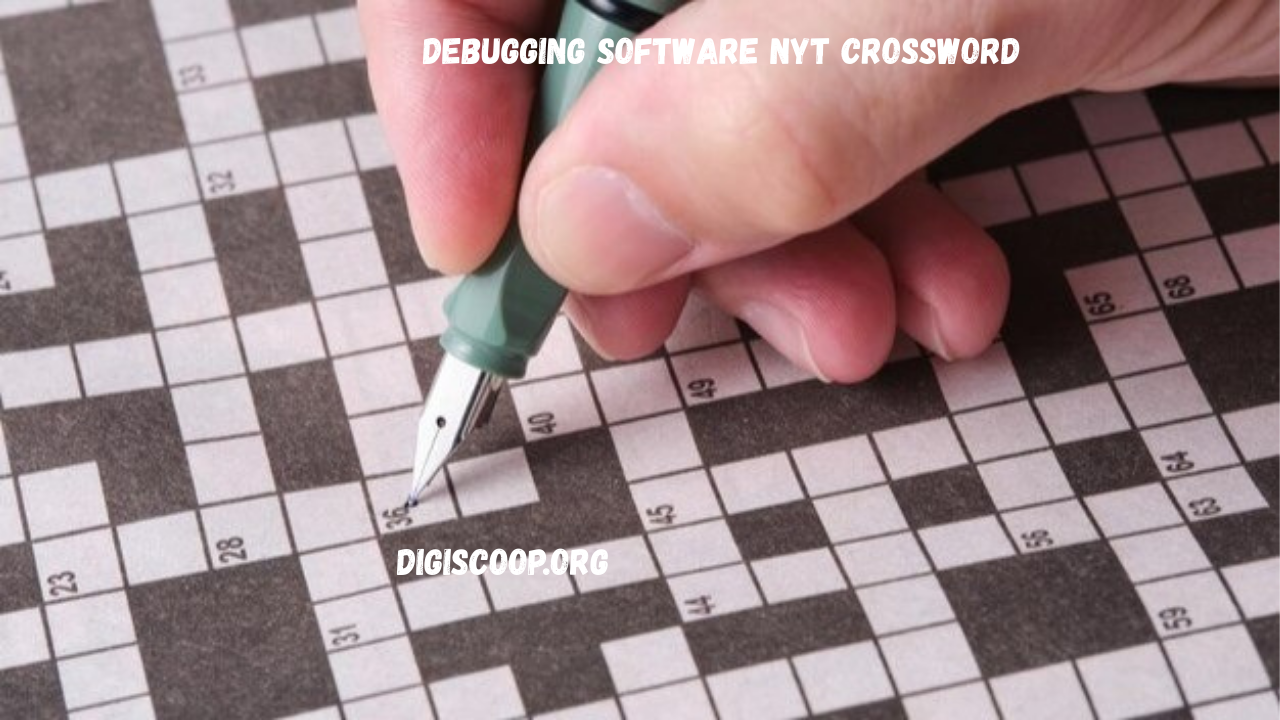Introduction: Debugging Software NYT Crossword ??
The phrase “debugging software nyt crossword” may look unusual at first glance, but for many crossword enthusiasts, it represents a fascinating intersection of language, technology, and puzzle-solving. On one hand, “debugging software” relates to the systematic process of identifying and fixing errors in computer programs. On the other, “NYT crossword” refers to the widely popular New York Times crossword puzzle, renowned for its clever clues, cultural references, and linguistic challenges.
When the two collide, either as a crossword clue or as a subject of curiosity, solvers are left asking: How do the concepts of debugging software, the NYT crossword, and the mysterious “??” connect? This article will explore this question in depth, providing insights into debugging as a technical practice, the art of solving NYT crossword puzzles, and how both disciplines overlap through logic, pattern recognition, and problem-solving.
Debugging Software: A Foundation in Problem Solving

Debugging software is the practice of finding and fixing errors—commonly called “bugs”—within a program’s code. Just as crossword solvers carefully examine clues, programmers must analyze their code line by line to uncover logical mistakes, misplaced characters, or misunderstood instructions.
Debugging requires patience, persistence, and a methodical approach. Some of the most common techniques include:
- Print debugging – inserting statements in the code to display values and track program flow.
- Interactive debugging – using a debugger tool to step through the program’s execution.
- Automated testing – writing tests that quickly reveal unexpected behavior.
The discipline of debugging software mirrors the cognitive work of tackling the NYT crossword puzzle. Both require the solver to slow down, notice small details, and apply structured reasoning to reach the correct answer.
The NYT Crossword: A Puzzle of Patterns

The New York Times crossword has been a cultural icon since its first publication in 1942. Each day of the week presents a puzzle of increasing difficulty, with Monday being the easiest and Saturday the hardest. The Sunday edition, although larger, is often closer in difficulty to a Thursday puzzle and is famous for its elaborate themes.
Within this structure, solvers encounter a range of clue types: straightforward definitions, wordplay, puns, abbreviations, and even references to contemporary culture, science, or technology. Occasionally, clues reference computing concepts such as “debugging software,” leaving tech-savvy solvers with an advantage.
For example, a crossword clue might read:
- “Process of fixing errors in code (16 letters)” → DEBUGGING SOFTWARE
- “Activity for a programmer, figuratively and literally” → DEBUGGING
By embedding technological language into the puzzle grid, the NYT crossword acknowledges how deeply coding and software concepts have permeated modern life.
Debugging Software NYT Crossword ?? – Decoding the Question Marks

The “??” in the phrase debugging software nyt crossword ?? adds another layer of mystery. In crossword conventions, question marks in clues often signal wordplay, puns, or misdirection. They tell the solver not to take the clue literally but to look for a figurative or humorous meaning.
For example:
- “Debugging tool??” might refer not to a programming tool but to a can of bug spray.
- “Software bug??” might hint at an insect-themed pun.
- “Fixing code??” could be a playful reference to medical “coding” rather than computer science.
This blending of literal and figurative meaning shows why the NYT crossword is beloved—it challenges solvers to think flexibly, much like programmers debugging software. The “??” keeps the mind open to multiple possibilities, mirroring how coders must consider more than one explanation for a malfunction.
Similarities Between Debugging Software and Solving Crosswords
On the surface, debugging and crossword solving might seem unrelated. But when examined closely, they share striking similarities:
- Pattern Recognition
- In debugging, programmers look for patterns in error messages or unexpected outputs.
- In crosswords, solvers identify recurring word structures, prefixes, and suffixes.
- Incremental Progress
- Debugging often involves testing small changes until the problem is isolated.
- Crossword solving relies on filling in small sections, which gradually unlock larger answers.
- Logical Deduction
- Coders hypothesize potential causes of errors, then test their assumptions.
- Crossword players make educated guesses, cross-checking with intersecting answers.
- Persistence
- Both activities demand patience. The first attempt is rarely successful, but persistence leads to breakthroughs.
- Creativity and Flexibility
- Debugging sometimes requires “out of the box” thinking to find unusual errors.
- Crossword solvers must interpret clues with humor, puns, or cultural twists.
The Cultural Fusion of Technology and Wordplay
The inclusion of terms like “debugging software” in the NYT crossword reflects how language evolves alongside technology. Crossword editors often update vocabulary to stay relevant, drawing on everything from social media slang to programming jargon.
For solvers unfamiliar with coding, such clues may seem intimidating. However, just as programmers learn the syntax of a new programming language, crossword solvers can learn the conventions of technical clues. In both contexts, the process is one of expanding vocabulary, recognizing new patterns, and adapting old strategies to modern contexts.
Debugging Your Approach: Tips for Solvers and Coders
Whether you are a programmer debugging software or a crossword enthusiast deciphering the NYT puzzle, the following strategies can sharpen your skills:
- Break Big Problems into Smaller Ones
- Coders isolate small code segments to test individually.
- Crossword solvers tackle easy clues first to gain traction.
- Use Tools Wisely
- Programmers rely on debuggers, compilers, and test frameworks.
- Crossword players use dictionaries, thesauruses, or online checkers for hints.
- Stay Flexible
- Code errors are not always where they seem; sometimes the cause lies elsewhere.
- Crossword answers might rely on wordplay, not literal meaning.
- Keep Learning
- Coding languages evolve, requiring constant study.
- Crossword puzzles introduce new cultural references, demanding continuous curiosity.
- Practice Patience
- Debugging and crossword solving are both journeys of trial and error. Success is often delayed but deeply rewarding.
Debugging Software NYT Crossword ?? – Why It Matters
Why does the connection between debugging software and the NYT crossword matter? Because it highlights the universality of human problem-solving. Whether in technology or wordplay, the human brain thrives on the challenge of deciphering, correcting, and completing systems.
The act of debugging a program and the act of solving a crossword both represent our drive to make sense of complexity. In both, we seek order from confusion, clarity from ambiguity, and satisfaction from resolution.
Conclusion: Debugging, Crosswords, and the Shared Human Puzzle
The phrase debugging software nyt crossword ?? encapsulates more than just a quirky crossword clue—it is a metaphor for two parallel disciplines that test our patience, creativity, and intellect. Debugging teaches us to confront problems systematically, while crosswords remind us to approach challenges with flexibility and humor.
Together, they demonstrate that whether we are fixing a program or filling a puzzle grid, we are engaging in the timeless human pursuit of problem-solving. The “??” at the end remains an invitation: to question, to explore, and to embrace the uncertainty that makes both debugging software and solving the NYT crossword endlessly rewarding.
Also Read : Urge Forcefully NYT: Understanding the Phrase and Its Popularity in Crossword Clues







